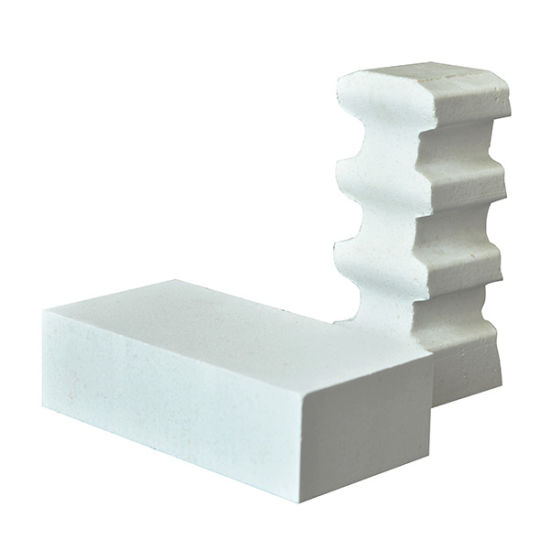Introduction of refractory materials in Sunrise refractory g
According to the performance requirements of the refractory of the regenerator and the working environment, the temperature of the upper checker brick ranges from 1200 °C to 1500 °C, which is most seriously eroded by alkaline steam and solid fly material. Therefore, the upper layer is generally made of alkaline material and the uppermost layer. The high-purity magnesia brick with good corrosion resistance, good permeability resistance, high temperature creep resistance and good thermal shock temperature has a MgO content of over 96.5%.
The temperature of the middle checker brick ranges from 800 °C to 1200 °C, the flue gas contains SO2 component, and some of the SO2 reacts with oxygen to form SO3. The NaOH volatilized from the molten glass reacts with SO3 to form Na2SO4. The temperature in the middle condensation zone changes around the melting point of the Glauber's salt (Na2SO4), which causes the Glauber's salt to repeatedly undergo solidification and liquefaction reaction. The reaction of Glauber's salt or SO2 with magnesium oxide produces sodium magnesium sulfate, which causes the brick structure to become brittle and pulverized. Therefore, the middle layer is made of anti-alkaline coagulum and magnesia-chrome brick or high-purity magnesia brick with strong resistance to SO2 and V2O5 erosion, or forsterite refractory brick and periclite-forsterite brick, which is fired at high temperature. The formed structure and the produced forsterite ensure that it has good performance properties, and the substance formed therein can form a protective film around the periclase particles. On the other hand, excessive SO3 will also react with MgO or CaO in the material to form magnesium sulfate or calcium sulfate, thereby causing damage to the brick body.

The temperature range of the lower checker brick is generally between 600 °C and 800 °C. There are many condensed alkali precipitates. The chemical erosion of this part is weak, but it is still eroded by Na2SO4. In addition, the lower layer is close to the flue, due to the influence of cold air. It is also subject to the thermal shock in the reversing direction, as well as the weight of the upper lattice, etc. Excessive thermal stress and mechanical stress can also cause damage to the brick. The bottom layer is generally made of low-porosity high-quality clay bricks with high resistance to high temperature creep, good thermal shock resistance and high compressive strength.
If you have any question for our refractory bricks, call me and i will reply you in the first time.
Pre:
Brief analysis of the performance characteristics of high al
Next:
Briefly describe the characteristics of hot Sale corundum br

